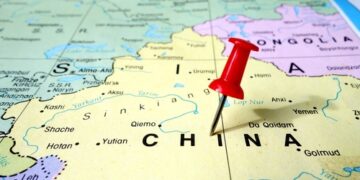Wood Mackenzie’s latest review of the global LNG industry concludes that the market was characterized by weak Asian demand in 2015, with a year-on-year decline of 2%. As a result, many LNG players shifted their focus to developing markets and employing new regasification capacity.
Despite weakened demand and the impact of the oil price crash, LNG production remained high throughout the year reaching 250 million tonnes in 2015—up 4 million tonnes on 2014—primarily due to a number of key project start-ups.
In 2016, the initial focus will be on the U.S., with the start of exports from Sabine Pass, signifying a key milestone; however, Wood Mackenzie cautions that with a further 125 million tonnes of LNG under development, real LNG growth is post 2016.
Key findings from Wood Mackenzie’s 2015 LNG review include:
• Global LNG production reached 250 million tonnes in 2015.
• China’s LNG demand declined 2% in 2015 following years of double digit growth.
• Australia’s key CSG LNG projects added 18.5 MMtpa of nameplate capacity.
• New entrants Jordan, Pakistan and Egypt imported 5.8 million tonnes in 2015.
• Asia spot prices reached a low of $6.90/MMbtu.
• Atlantic to Pacific LNG trade flows fell by 16%, from 96 MMtpa to 82 MMtpa.
• Weak demand translated into lower shipping rates of $30,000/day—the lowest since 2010.
• The potential to optimize U.S. LNG flows saw 19 new LNG vessels ordered in 2015.
• Shell’s proposed acquisition of BG would create the largest LNG marketer—supplying 15% of global demand
In 2015, weak market environment forced companies to adjust strategies and tactics. Sellers started to look further afield to emerging markets in Middle East and Africa and new opportunities in Asia, while buyers exercised more caution in contracting,” Chong Zhi Xin, principal analyst for South-Eastern Asia and Australasia Gas & Power research at Wood Mackenzie, said.
Wood Mackenzie says that as a result of the continued slowdown in Asia, global LNG players focused on emerging markets to cushion the decline, as Chong explained: “New buyers played a crucial role in balancing the LNG market in 2015 and offsetting some of the decreased Asian appetite. Jordan, Egypt and Pakistan all issued new tenders which were met with intense interest. The emergence of these three new market entrants alone resulted in 5.8 million tonnes of LNG imports last year, via fast-tracked Floating Storage and Regasification Unit (FSRU) developments—a trend we expect to continue in 2016 as access to new customers and regasification capacity remain key.”
Global LNG production remained high throughout 2015, with Wood Mackenzie estimating volumes reached 250 MMtpa. “We saw a 4 million tonne increase in LNG volumes globally, compared with 2014,” Giles Farrer, research director, Global Gas & LNG, Wood Mackenzie, said. “The increase is primarily due to the startup of key coal seam gas (CSG) projects in Australia—BG’s QC LNG in January and Santos’ GLNG in August 2015. A third project, ConocoPhillips’ APLNG plant, shipped its first cargo at the start of January 2016. The commissioning of these facilities, which have a combined capacity of 26.5 MMtpa, marks the start of the country’s ascent to become the world’s largest supplier of LNG by 2019.”
“The fall in Asian demand and the rise in Australian supply, meant some Atlantic LNG volumes were squeezed out of the market and Atlantic to Pacific trade flows fell by 16%—from 96 MMtpa to 82 MMtpa. With the lower oil price driving down Asian LNG prices, the spread between European gas prices and Asian LNG prices narrowed. Consequently companies with Atlantic supply were drawn to European markets offering more attractive returns,” Farrer added.
Wood Mackenzie asserts that the prolonged fall in oil price also impacted company decision making with budgets and capital allocation across the industry under intense scrutiny. Alex Munton, principal analyst – Americas LNG & Gas research at Wood Mackenzie says: “U.S. LNG projects raced ahead in 2015 with three taking Final Investment Decision (FID) in the first half of the year. 18.5 MMtpa of capacity was sanctioned, most notably by Cheniere Energy, which took Final Investment Decision on two trains at Corpus Christi and a fifth train at Sabine Pass, although Freeport LNG also took FID on a third train. These projects were all able to take sanction as a result of agreements signed in previous years before the fall in prices, however, project sanctions slowed significantly in the second half of the year as the collapse in prices took affect.”
“The biggest corporate news of 2015 was Shell’s planned acquisition of BG, announced in April 2015. Already a major LNG player, Shell has tried to capitalize on the downturn with the takeover, a move which if finalized, will create the largest LNG marketer in the world—meeting 15% of global demand. Within Japan, the TEPCO-Chubu Electric merger was implemented to strengthen corporate balance sheets and this resulted in the formation of JERA, the world’s largest LNG buyer,” Munton continued.
“As we move into 2016, the initial focus will be on the U.S., with the start of exports from Sabine Pass, signifying a key milestone. However, the pace of new project ramp up and the threat of a prolonged outage at Yemen presents downside risk to LNG supply availability. Indeed the reality is that the wave of LNG growth will not hit the market until after 2016. Several key dynamics will affect prices and flows, and we will be watching these closely over the course of the year: coal to gas competition in both Europe and Asia; Chinese energy policy; access to regas capacity in Europe and contract flexibility will all become more important as the year unfolds,” Chong offered in closing.
Source: Wood Mackenzie





























































